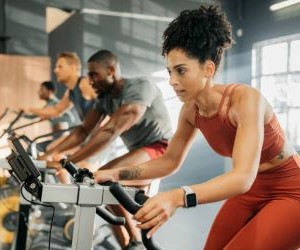Learn how to deal with punctures on long rides with prevention tips, repair techniques, and smart gear choices to keep rolling without stress.
HOW DO I IMPROVE EFFICIENCY ON FLAT ROADS?
Many cyclists excel on climbs but struggle to maximize performance on flat terrain. Riding efficiently on flat roads isn’t just about raw power—it’s about optimizing aerodynamics, cadence, and energy distribution. The difference between cruising comfortably and wasting watts often lies in subtle adjustments to position, pacing, and mindset. This article explores how to improve efficiency on flat roads through a combination of aerodynamic strategies, gear selection, group tactics, and training adaptations. Whether you’re preparing for a time trial, a Gran Fondo, or simply want to ride faster with less effort, mastering flat-road efficiency is a game-changer.

Aerodynamics and riding position
On flat terrain, air resistance is the dominant force slowing a cyclist. Up to 90% of energy output goes into pushing air, making aerodynamics the single most important factor in efficiency.
Optimizing body position
Small tweaks in posture can yield massive watt savings. Lowering the torso, narrowing elbows, and relaxing the shoulders reduce frontal area without compromising comfort. Riders should experiment with positions that balance aero gains and sustainable breathing.
Equipment and clothing choices
Tight-fitting jerseys, aero helmets, and deep-section wheels cut drag substantially. Shoe covers and smooth fabrics also reduce turbulence. However, the most cost-effective gain remains a disciplined body position maintained consistently over kilometers.
Lower your torso without excessive strain.
Keep elbows tucked for reduced frontal area.
Invest in aero clothing before expensive gear.
Train holding aero position over long distances.
Aerodynamics is the flat-road equalizer: the rider with better positioning often beats stronger cyclists burning excess watts upright.
Pacing, cadence, and gear strategy
Beyond aerodynamics, efficient flat-road riding demands mastery of pacing, cadence, and gear use. Mistimed efforts or inefficient pedaling waste energy quickly, especially in long events.
The art of steady pacing
Flat terrain rewards consistent effort. Surging unnecessarily burns glycogen and disrupts rhythm. Power meters or heart rate monitors help riders hold even outputs, minimizing costly spikes. The goal is to ride like a metronome—smooth, controlled, and sustainable.
Cadence and gear selection
Efficient riders maintain a cadence between 85–95 rpm, reducing muscular strain and enhancing aerobic reliance. Proper gear ratios allow this cadence without grinding. Anticipating wind shifts or turns with timely gear changes keeps momentum flowing.
Use steady power outputs instead of frequent accelerations.
Target 85–95 rpm cadence for efficiency.
Shift early to maintain rhythm into headwinds or corners.
Use data feedback from power or heart rate monitors.
The strongest riders don’t necessarily push the hardest—they ride the smartest, managing effort with precision.
Training and group riding tactics
Efficiency on flat roads isn’t just about solo performance—it’s also about how riders prepare and collaborate. Specific training and group tactics elevate speed while conserving energy.
Targeted flat-road training
To improve, riders must train what they want to master. Flat-road intervals at threshold or sweet spot intensity teach the body to sustain aero positions and steady power. Indoor trainers replicate steady outputs, while outdoor sessions add wind and terrain variables.
The power of drafting in groups
In group rides, drafting saves up to 30% of energy expenditure. Positioning is critical: the sweet spot is just behind the wheel ahead, without overlapping. Rotating pulls efficiently distributes effort across the group, sustaining high speeds with minimal fatigue.
Incorporate steady-state intervals into training.
Practice holding aero position under fatigue.
Use drafting to conserve energy in group rides.
Rotate smoothly during pacelines to maintain flow.
By blending training adaptations with smart group tactics, cyclists can unlock efficiency that translates into faster average speeds with less energy wasted.
YOU MAY ALSO BE INTERESTED






